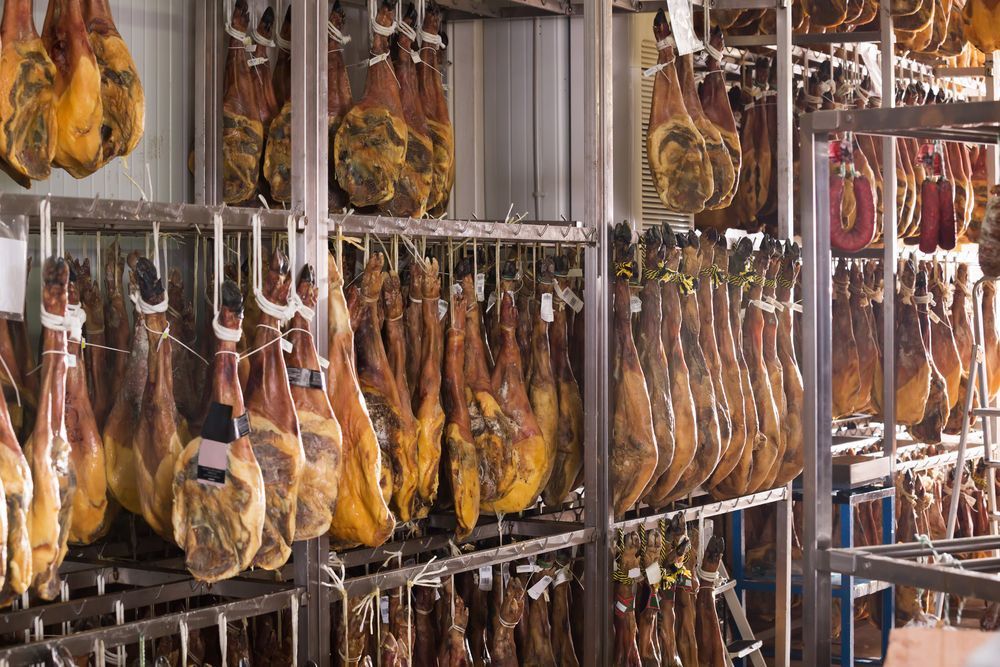
Curing
When we talk about curing in gastronomy we are talking about a food preservation process in which some kind of seasoning can be included.
Curing is mainly used for the production of meat, fish and cheese; a combination of salt, sugar, nitrates or nitrites is used in this type of process, although many others also include smoking techniques. In the world of ham this concept is basic, ham is cured par excellence and in fact, although all hams are cured, the name “cured ham” refers to a specific type of ham also known as Gran Reserva ham.
What is Curing
The curing process dates back to the time when human beings were faced with the need to preserve food and thus avoid waste, ensuring sustenance in harder times. Foods such as salted cod changed the European civilization, while salted meat was also used as the main food in ship trips and voyages because of its easy storage.
As a preservation method, certain chemical actions are used in the curing process, which are the ones that delay the expiration date of the food. By slowing down the reaction of certain proteins and fats, the deterioration and decomposition of the food is avoided, making the water extracted from the food as less welcoming as possible for undesirable microorganisms. To accomplish all this, the curing process is carried out with:
Salt
- The most important ingredient in curing. The large amounts of salt used in food curing processes act as an exterminator of microorganisms, eliminating them and cancelling their growth.
Sugar
- This ingredient is involved in the taste of the final product but is also used as a favorable agent in the growth of certain beneficial bacteria.
Nitrites and Nitrates
- These agents help to kill bacteria and are also involved in the development of certain flavours. Nitrites and nitrates are also responsible for the reddish colour characteristic of cured meats such as ham.
Smoke
- Although not a fundamental “ingredient” in all curing processes, smoke adds compounds to the surface of food, which also influences the growth of bacteria and fungi, which in turn provides a very characteristic taste.
The curing of the ham
When we talk about cured ham and ham, we are talking about a process that starts from the moment the pig is slaughtered until the ham reaches the shops and delicatessens for sale.
Simple but delicate, this is the process of curing a ham and the quality of the final product will depend precisely on this, on time. Although we currently have technology that allows us to control in detail all the factors involved in the curing process of a ham, the procedure in general is still handmade and requires the intervention of the “cook”or ham expert at all times.
Following the passing of the seasons, the hams tend to be salted in winter, with low temperatures and high humidity, so that with the passing of the seasons the humidity decreases and the temperature increases.
And if you want to see for yourself the difference in taste and texture between a cured ham for less time and a cured ham for longer time, do not hesitate to buy any of the tasting packs available at Enrique Tomás:








